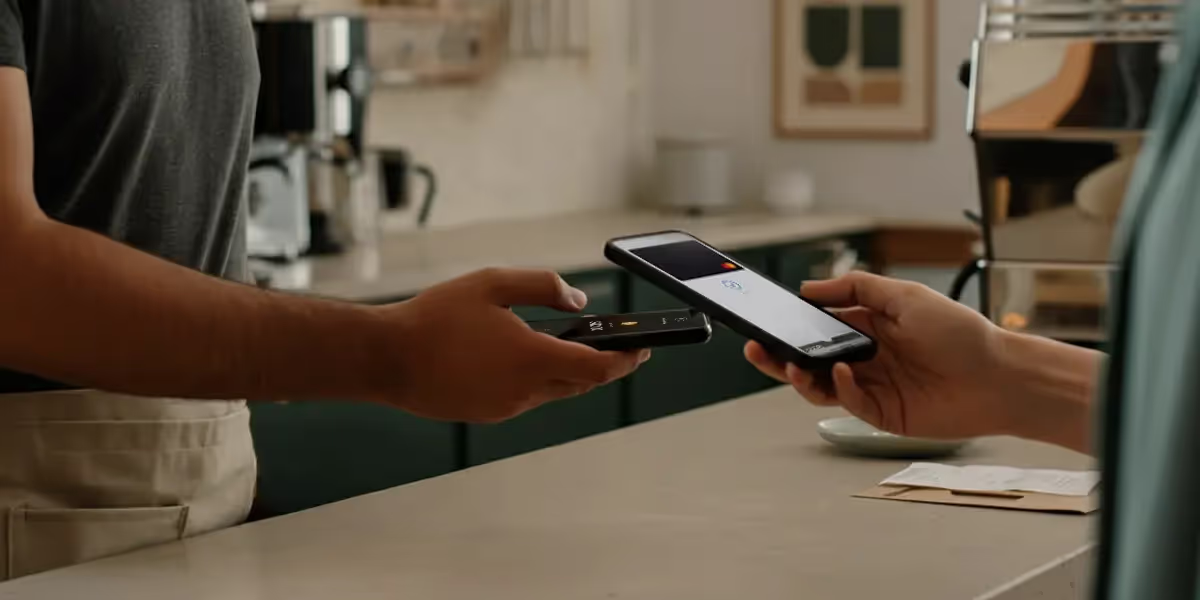Learning how to accept credit card payments is a key step to growing your business. With credit cards making up 35% of consumer payments, it's essential for meeting customer expectations, according to a 2024 Federal Reserve payments study.
This guide simplifies the process. We'll cover choosing tools, meeting security requirements, and understanding fees, so you can boost your sales with confidence.
Choose a payment processor
A payment processor is a company that securely handles the entire transaction between your customer's bank and your business account. Finding the right partner is the most important step in learning how to accept credit card payments for small business.
When comparing the different ways to accept credit card payments, look for a processor that aligns with your specific needs. Here are the key factors to evaluate:
- Look for providers that offer transparent pricing models and flexible pay-as-you-go contracts without early termination penalties.
- Ensure the processor handles all the payment methods your customers prefer, including credit cards, debit cards, and digital wallets.
- Confirm the processor integrates with your essential business tools, like your point-of-sale (POS) system or e-commerce platform.
- Verify the provider is PCI compliant to ensure strong security that protects both your business and your customers' sensitive data.
- Evaluate the quality of their customer support, as you will need quick and helpful assistance to resolve any transaction issues.
Set up a merchant account
A merchant account is a specific type of bank account that temporarily holds funds from your credit and debit card sales. These funds are held here before being transferred to your primary business bank account.
To get a traditional merchant account, you typically need to apply through a bank and undergo an underwriting process. This involves submitting your business license, financial statements, and other documents for approval.
However, many modern payment processors, like JIM Tap To Pay mobile POS, known as payment service providers (PSPs), simplify this. They use an aggregated merchant account model, where you are set up as a sub-merchant. This allows you to start accepting payments much faster, often without a lengthy application.
Taking credit card payments with your phone
Your smartphone can be one of the most powerful and convenient tools for getting paid. With the right app, you can turn the device you already own into a payment terminal.
Using mobile apps from payment processors
This is how to accept credit card payments on my phone with minimal hardware. Processors provide mobile apps that let you key in a customer's card details manually for a card-not-present transaction.
These apps also pair with mobile card readers for secure, in-person payments. Many now support features like Tap to Pay on iPhone, which allows you to accept contactless cards and digital wallets using only your phone.
The JIM Payments app, for example, offers all these features. With the JIM app, your iPhone becomes a fully functional card machine — completely free to use. You only pay a 1.99% fee per transaction.
This makes it an excellent choice for freelancers, mobile businesses, or anyone needing to accept payments for personal use without upfront hardware costs.
Download the app now and start accepting payments anywhere!
What is a mobile card reader and how does it work?
A mobile card reader is a device or app that allows you to accept credit and debit card payments using your smartphone or tablet — no traditional card machine or extra hardware required.
It works by connecting to your phone via Bluetooth or, in more modern solutions like Tap to Pay, by using your phone’s own NFC (near-field communication) technology to accept contactless payments directly.
With JIM, you don’t even need extra hardware. Thanks to Tap to Pay on iPhone, your phone becomes a powerful, fully contactless card reader. Customers simply tap their card or digital wallet (like Apple Pay or Google Pay) on your phone to complete a transaction — it’s fast, secure, and seamless.
Key benefits of JIM:
- No equipment needed: Just use your iPhone — no cables, dongles, or machines.
- Fully free to use: Download and use the app for free. You only pay a 1.99% fee per transaction.
- Secure and compliant: JIM is PCI-compliant and uses Apple’s secure Tap to Pay technology.
- Perfect for on-the-go sales: Great for small businesses, freelancers, and anyone selling in person.
Common fee structures: Interchange, flat-rate, and tiered pricing
Most processors use one of three main pricing models to charge for their services. Understanding these is the key to finding the most cost-effective solution for your business.
- With flat-rate pricing, you pay one predictable percentage for every transaction, regardless of card type. This simple model, used by processors like JIM, is ideal for new or small businesses due to its transparency.
- Interchange-plus pricing passes the direct interchange fee cost to you, plus a fixed processor markup. While transparent, the varying rates for different cards can make it complex to forecast your exact costs.
- Tiered pricing groups transactions into different rate tiers, such as “qualified” or “non-qualified.” This model can be less transparent and may lead to unexpectedly high costs for certain card types.
What are hidden fees and how to spot them?
Beyond the primary transaction rate, some processors add extra charges that can surprise you on your monthly statement. These "hidden fees" can significantly increase your total processing costs.
But with JIM, there are no hidden fees — everything is transparent, and you only pay a simple 1.99% per transaction.
Some common extra charges to watch out for include early termination fees, monthly minimums, and separate fees for PCI compliance. You may also see smaller charges for things like statement processing or batching your daily transactions.
To avoid surprises, always ask for a complete schedule of all possible fees before signing a contract.
A reputable provider should be transparent and willing to explain every line item on your statement.
Choosing a provider with a simple, flat-rate pricing model, like JIM, is often the easiest way to avoid this issue. These models typically bundle all costs into one rate, giving you predictable expenses without hidden charges.
How to calculate your effective processing rate
Your effective processing rate is the true, all-in cost of accepting credit cards. It bundles every fee—per-transaction, monthly, and incidental—into a single percentage of your total sales.
To find your rate, use this simple formula for a given month:
(Total Processing Fees ÷ Total Card Sales) × 100 = Effective Rate %
Ready to accept card payments with confidence?
This guide covered the essentials: choosing a processor, understanding fees, and selecting the right tools for your business. Mastering these steps is key to increasing sales and building credibility with customers.
Many processors introduce complexity with hidden fees and hardware. JIM simplifies payments with a single flat rate of 1.99% per transaction and allows you to accept payments directly on your iPhone, no reader required.
Give your customers the seamless checkout they expect. Create your free JIM account to start accepting secure payments in minutes.















